When most people hear about the uses of Artificial Intelligence, the first thing they usually think of is creating robots or some famous science fiction movie like The Terminator depicting the rise of AI against humanity.
However, it’s not even a step towards the current truth about AI. Artificial intelligence is the simulation of human intelligence in machines that are programmed to think like humans and mimic their actions. The term may also be applied to any machine that exhibits traits associated with a human mind, such as learning, analyzing, comprehending, and problem-solving. The applications of artificial intelligence in the real-world are perhaps more than what many people know. In this blog, we will discuss what is artificial intelligence with examples and ai applications in real life.
Introduction to Artificial Intelligence
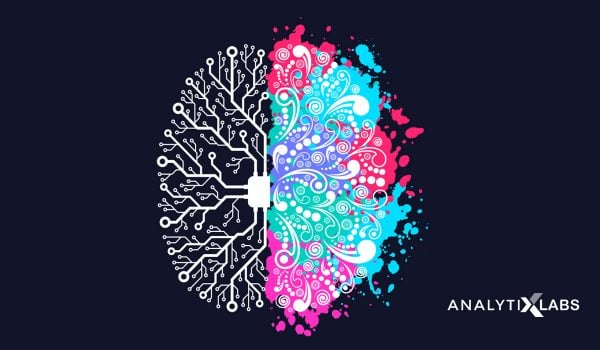
The ideal characteristic of artificial intelligence is its ability to rationalize and take actions that have the best chance of achieving a specific goal or defined operations. With the advancements of the human mind and their deep research into the field, AI is no longer just a few machines doing basic calculations. The real world ai applications are wired using a cross-disciplinary approach based on mathematics, computer science, linguistics, psychology, and many more domains.
The uses of artificial intelligence are endless. Technology and AI applications can be applied in many different sectors and industries to generate the maximum output out of the operational front. In the current time period, AI is being tested and used in the healthcare industry for dosing drugs and different treatment in patients, and for surgical procedures in the operating rooms as well.
Other examples of machines with artificial intelligence include self-driving cars, automated systems, computers that can play games like chess, and much more. These examples of artificial intelligence implementation also have to ensure that each of these machines must weigh the consequences of any action they take, as each action will impact the end result. In chess, the end result is winning the game. For self-driving cars, the computer system must account for all external data and compute it to act in a way that prevents a collision.
You may also like to read: What is Applied AI?
Apart from helping us in the technological sectors, various uses of artificial intelligence can be found in the financial industry, where it is used to detect and flag malicious activities in banking and finance such as unusual debit card usage and large account deposits. These AI applications help a bank’s fraud department detect any unusual behavior from their customers or external parties. Applications for AI are also being used to help streamline the trading industry. This is done by making supply, demand, and pricing of securities easier to estimate through building comprehensive analysis algorithms. Now that we have understood the various aspects of ai intelligence and its usage in different sectors, let’s take a look at the list of Top 15 Applications of AI.
Real World AI Applications
- Personalized Online Shopping
- Smart Cars
- Marketing
- Enhanced Images
- Social Media
- Surveillance
- Agriculture
- Customer Service
- Video Games
- Healthcare
- Banks
- Smart Homes
- Virtual Assistance
- Space Exploration
- Chatbots
Now, as we move further with the topic, let’s discuss some ai examples in real life. These real time applications of artificial intelligence will help you delve deeper into developing an understanding of AI:
1. Personalized Online Shopping
Personalizing users’ experience has become the latest pantheon for all the leading tech giants. E-commerce stores aren’t behind either and have been the biggest platforms to implement the personalization domain of AI. The latest artificial intelligence applications use AI-powered algorithms to curate the list of buying recommendations and filterations for the users. The process of selling online has become significantly easier due to these helpful innovations.
They first collect the user data by reviewing their most recent search history. Then, these AI algorithms create a list of the products that fit the criteria of being useful or similar that the users might be interested in looking at and potentially buying in similar and different categories.
For instance, if a user has purchased a smartphone, the AI algorithms suggest various add-on products for the same model they purchased, like screen guards, back covers, earphones, etc. Suppose the algorithms are intrinsic and smart enough. In that case, they can also go on a step further in suggesting personalized products like compatible pairable devices, extended warranty plans, damage protection plans, and much more.
Through this personalization, users get products that they actually might be interested in to choose from. Amazon’s recommendations are a great example of smart AI implementation in e-commerce.
2. Smart Cars
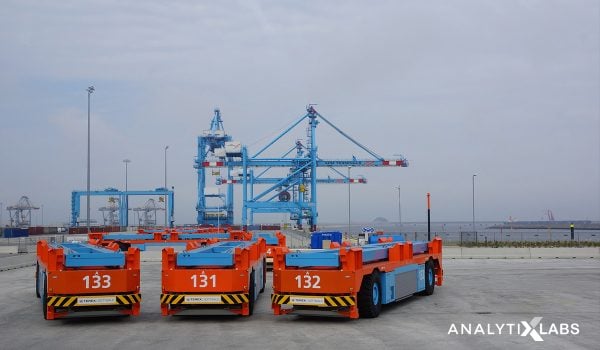
Self-driving cars is one of the most common ai examples in real life, becoming increasingly reliable and ready for dispatch daily. From Google’s self-driving car project to Tesla’s “autopilot” feature, it is a matter of time before AI is a standard-issue technology in the automotive industry.
Advanced Deep Learning algorithms can accurately predict what objects in the vehicle’s vicinity are likely to do. The AI system collects data from the vehicle’s radar, cameras, GPS, and cloud services to produce control signals that operate the vehicle. Moreover, some high-end vehicles come with AI parking systems already. With the evolution of AI, soon enough, fully automated vehicles will be seen on most streets.
3. Marketing
One of the greatest artificial intelligence examples applications, Marketing, has been a key area for improvement and the latest trends in AI. The early 2000s were not so great in terms of AI’s implementation on the marketing domain online.
Yes, e-commerce existed, but the search wasn’t that great. It was hard to find anything in a store if you didn’t know the exact name. It is due to the improvement in AI that smart suggestions are way more effective now.
With the growing advancement in AI, in the near future, it may be possible for consumers on the web to buy products by snapping a photo of it. Companies like CamFind and their competitors are experimenting with this idea already.
Moreover, AI has also made its way into many software and hardware used by the marketing individuals to help them calibrate the huge amount of data and comprehensively analyze it. Big Data and Machine Learning have been the major players in the domain where AI has shined and effectively elevated the various processes involved in handling data. Taking away a load of performing monotonous and mundane tasks, AI’s implementation in the marketing sector has elevated productivity of the domain up to many notches.
4. Enhanced Images
Cameras and apps use AI for applying different effects on images, refining their quality, and even suggest how to click them live!
AI can help in object identification in images and also enhance the photograph to the maximum extent by identifying the depth, lighting, and scope of the picture, and helping capture every element in as much detail as possible. By using this feature, many apps and cameras let you add a variety of effects in your pictures.
Artificial intelligence features allow the users to blur out the background, increase focus on a particular object, add filters, and do a plethora of other amazing experiments on the clicked picture.
Moreover, Google Photos also uses AI to let users look up photos of particular people in their contact lists or tags. It identifies the faces of different people in your pictures and enables you to tag them or search accordingly.
5. Social Media
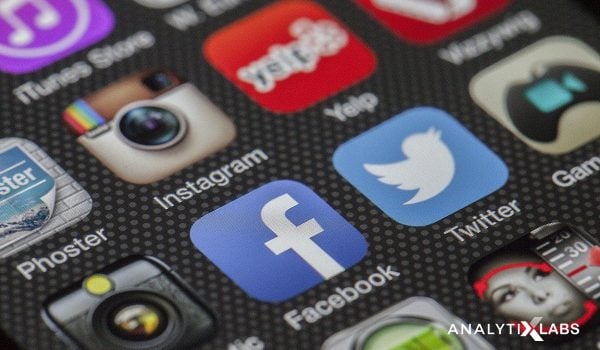
Social media is something that has established itself as an essential element for the current generation. We’ve been generating an immeasurable amount of data through chats, tweets, posts, and so on.
In the most common understanding of the statement, wherever there is an abundance of data, AI and machine learning are always involved. The most common use of AI in social media is for face verification and to detect facial features.
AI in social media can be associated with big data and machine learning where deep learning is used to extract every minute detail from an image by using a bunch of deep neural networks. On the other hand, machine learning algorithms are used to design your feed based on your interests.
6. Surveillance
Traditional security camera monitoring is usually conducted by a human operative. Humans are susceptible to make mistakes due to various different reasons, and human error in this domain can be a dangerous affair. Accidents are bound to happen due to trouble in tracking multiple monitors simultaneously.
Like other real world ai applications, AI can also be trained using supervised exercises, developing security algorithms, identification protocols, and much more, to take input from security cameras. Eventually, AI can identify potential threats and warn human security officers to investigate further.
AI has significantly evolved in the surveillance domain and can identify many types of threats such as intruders, invalid access, unidentified individuals on defined premises, etc. Although limited in its capabilities, AI is expected to be a major asset across the world in the surveillance domain in the next 10 years.
7. Agriculture
One of the latest artificial intelligence applications, Agriculture, has also shown a significant impact on the industry.
With the increased demand for food, organizations are using automation and robotics technology with AI embedded in it to help farmers find more efficient ways to protect their crops from various elements like weather, weeds, market consumption rates, and much more.
Issues such as climate change, population growth, and food security concerns have pushed the industry into seeking more innovative approaches to improve crop yield and targeted production.
This AI applications in real life, in the form of image recognition, identify possible defects in the crops through images captured by the user’s smartphone camera. Users are then provided with soil restoration techniques, tips, and other possible solutions to deal with the identified defects.
8. Customer Service
There are many websites now that offer customers the ability to chat with customer support. It’s one of the most general real world ai applications. These chat support bots are little more than automated responders.
The more advanced customer service chatbots are able to extract information from the site and present it to you on request. Chatbots are needed to adapt as per the natural language.
Teaching a machine to understand the human language is not easy. Rapid advances in natural language processing (NLP) means they are evolving by consuming information all the time.
9. Video Games
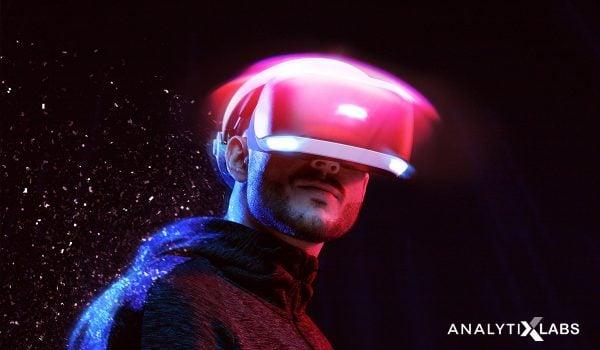
Over the past few years, artificial intelligence has become an integral part of the gaming industry. In fact, one of the biggest accomplishments of AI is in the gaming industry.
The actions taken by the opponent AI are unpredictable because the game is designed in such a way that the opponents are trained throughout the game and never repeat the same mistakes.
Their abilities to perform in the game gets better as the game gets harder. This makes the games very challenging and prompts the players to constantly switch strategies and never use the same tactics again.
The gaming world is the best example of intelligent real world AI applications as it is at this platform where there are a lot of alterations in the purpose. AI is used for designing the game, developing the characters, and also frame the story to a certain extent.
10. Healthcare
The Healthcare sector has been amongst the top adopters of AI technology. It boils down to the power of AI to crunch numbers fast and learn from historical data, which is critical in the healthcare industry.
AI has taken a critical step in helping people with looking after patients as well. The automated bots and healthcare applications ensure proper medication and treatment of patients in the facilities.
In certain cases, AI applications have also been known to provide operating assistance to the doctors.
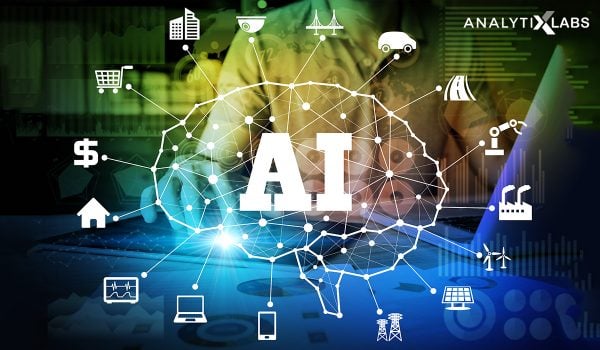
11. Banks
A lot of banks have already adopted AI-based systems or software to provide customer support and detect anomalies and credit card fraud.
Another use of AI for banking, which is of far higher value for banks, is in fraud detection. It can be hard for humans to understand patterns, but machines are good at it. This is where fraud prevention AI comes into play.
By tracing card usage and endpoint access, security specialists are more effectively preventing fraud. Organizations rely on AI to trace those steps by analyzing the behaviors of transactions.
12. Smart Homes
The most advanced form of applications of artificial intelligence in the real-world are being implemented in homes, and are becoming smarter every day. Various devices like smart locks, smart switches, ect., are increasingly becoming compatible with various devices, and the application of smart homes is becoming more accessible to the general population every day.
The past few years have witnessed many smart devices that can now learn your behavior patterns and help you save money by saving energy, suggesting steps that can potentially save your time and resources, and implementing cost-optimized operations. These devices help you with a smarter way of living.
Thermostats and building management systems can help automate building heating and cooling, for instance. In effect, they learn and can predict when to turn your boiler on or off for optimal comfort, whilst factoring in outside weather conditions as well.
13. Travel
Travel companies are using AI for several tasks. Apart from enhancing their customer support (which we’ve already discussed), they are also using AI tools for determining prices for various different locations by analyzing historical and real-time data from the various accessible data silos.
AI and machine learning applications help travel companies in calculating profitable yet affordable prices according to various factors to attract in a multitude of customers.
AI is also used to evaluate the level of traffic on the roads and give an accurate estimate for the trip for travel agencies and enterprises. It can also calculate the estimated time it will take you to reach a particular point through different modes of travel, including bus, trains, and flights.
14. Space Exploration
Space expeditions and discoveries always require analyzing vast amounts of data. Artificial intelligence and machine learning is the best way to handle and process data on this scale.
For instance, after rigorous research, astronomers used Artificial Intelligence to sift through years of data obtained by the Kepler telescope in order to identify a distant eight-planet solar system.
Artificial intelligence is also being used for NASA’s next rover mission to Mars, the Mars 2020 Rover. The AEGIS, which is an AI-based Mars rover, is already on the red planet. The rover is responsible for the autonomous targeting of cameras in order to perform investigations on Mars.
15. ChatBots
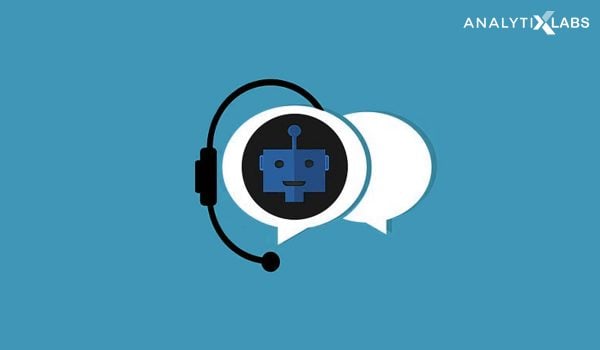
These days, virtual assistants are a very commodity possessed by various industries. Almost every household has a virtual assistant that controls their appliances at home. A few examples include Siri, Cortana, and Alexa, which are gaining popularity because of the user experience they provide.
Amazon’s Echo is an example of how artificial intelligence can be used to translate human language into desirable actions. This device uses speech recognition and NLP to perform a wide range of tasks on your command.
It can do more than just play your favorite songs. It can be used to control the devices at your house, book cabs, make phone calls, order your favorite food, check the weather conditions, and so on.
You may also like to read: 18 (Interesting) Artificial Intelligence Projects Ideas
Examples of AI Implementation
- Google’s AI-Powered Predictions
Using anonymized location data from smartphones, Google Maps (Maps) can analyze the speed of movement of traffic at any given time. Maps can more easily incorporate user-reported traffic incidents like construction and accidents.
- Commercial Flights Use an AI Autopilot
AI autopilots in commercial airlines is a surprisingly early use of AI technology that dates as far back as 1914, depending on how loosely you define autopilot. The New York Times reports that the average flight of a Boeing plane involves only seven minutes of human-steered flight, which is typically reserved only for takeoff and landing.
- Smart Email Categorization
Gmail uses a similar approach to categorize your emails into primary, social, and promotion inboxes, as well as labeling emails as important. Every time you mark an email as important, Gmail learns.
- Robo-readers
Essay grading is very labor-intensive, which has encouraged researchers and companies to build essay-grading AIs.
- Voice-to-Text
A standard feature on smartphones today is voice-to-text. By pressing a button or saying a particular phrase (“Ok Google”, for example), you can start speaking and your phone converts the audio into text.
The creation of a machine with human-level intelligence that can be applied to any task is the Holy Grail for many AI researchers. AI has long been the muse of dystopian science fiction, in which super-intelligent robots overrun humanity, but experts agree it’s not something we need to worry about anytime soon.
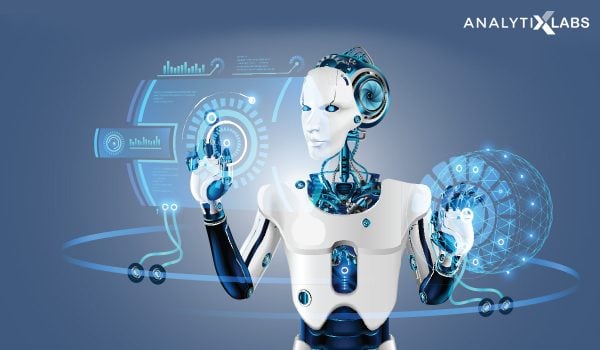
The evolution of AI and machine learning technologies has seen an exponential rise in the last decade. These technologies have established themselves as a core requirement across various industries and continue to leverage their importance and need in other industries.
The days aren’t too far when your refrigerator might know more about your diet and suggest you the best food to eat. Or your chatbot like Alexa or Siri might even become your professional assistant. With the breakneck speed of innovative advancements happening in the world of AI, the applications of the technology are becoming limitless.
Space exploration, microbiological research, archaeological advancements, and much more have become much easier tasks than they were 10 years ago due to AI. And the scope will only grow with time, with Virtual Reality (VR), training simulations, intuitive chatbots, and exploration technologies already paving the way for the future with the help of AI. All that we, as humans, can do is observe this advancement and let it help us in building a better future.
You may also like to read:
1. How to Become an AI Engineer? Know about Skills, Role & Salary
2. 10 Advantages and Disadvantages of Artificial Intelligence

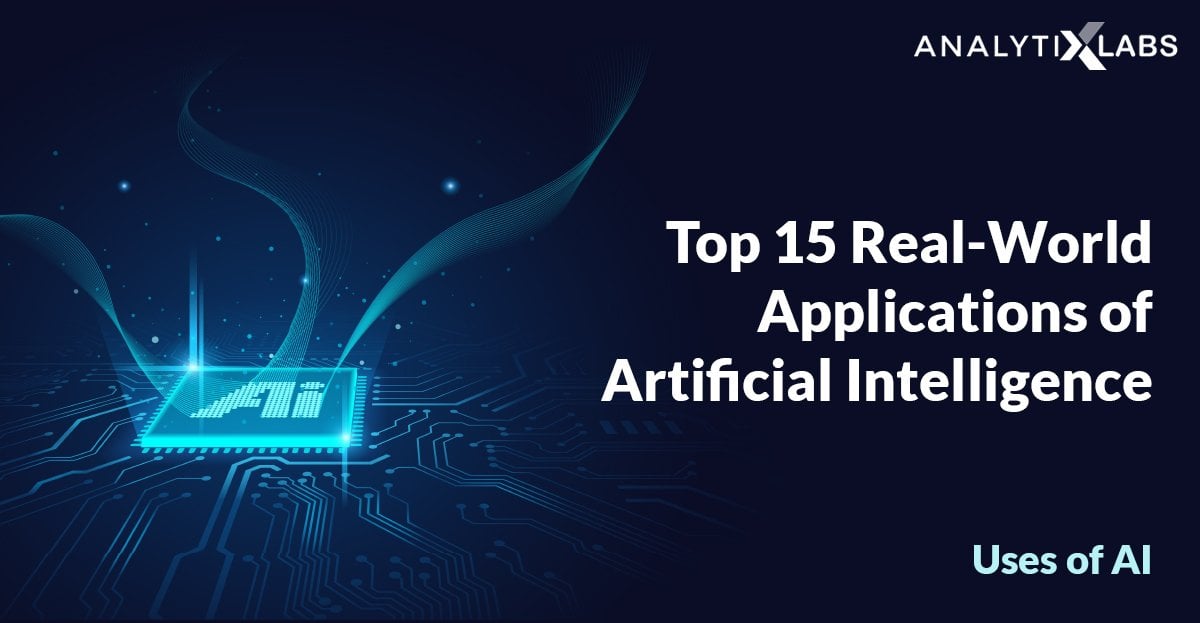







6 Comments
It is very useful sight. I can easily find what I want.
Very helpful.
Thanks for sharing this useful information! Hope that you will continue with the kind of stuff you are doing.
This is in-depth and has helped me a lot to understand the concepts
Very helpful information!
Thank you for the valuable information on the blog.
I am not an expert in blog writing, but I am reading your content slightly, increasing my confidence in how to give the information properly. Your presentation was also good, and I understood the information easily.
I read this article and it is very informative. I like the way you explained about the topic. Thank you so much for sharing all this wonderful info. It is so appreciated!!!